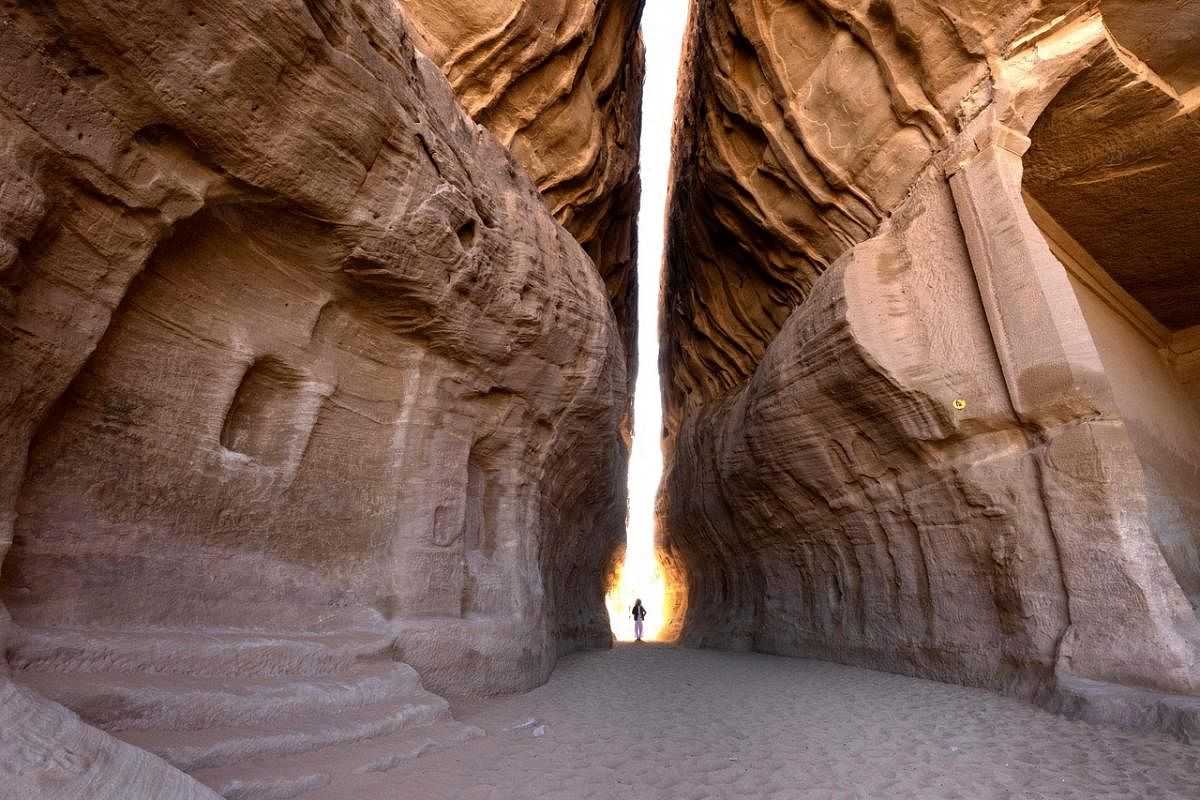Echoes from past

Stone walls dwarf a lone figure at the Nabataean archaeological site of Al-Hijr (Hegra), which has been largely undisturbed for almost 2,000 years.
Hegra - located near the north-western Saudi city of Al-Ula and south of Petra in Jordan - is home to the tombs of the Nabataeans, an ancient civilisation of nomads turned spice merchants. Hegra served as the crossroads for trade routes from the Red Sea to the Arabian Gulf.
The site dates back to the first century BC and includes 111 tombs and monuments, though they are still outnumbered by the more than 600 at the more famous Nabataean capital of Petra.
The carved tombs draw on architectural influences from the Assyrian, Egyptian, Phoenician and Hellenistic cultures. Many boast elaborate facades and cave drawings. Some of them are marked as the final resting places of high-ranking military officers and their families.
A new chapter in Hegra's history is beginning as travellers are allowed access to the site for the first time.
By 2035, Al-Ula is hoping to attract two million tourists a year, and has renovated its airport to quadruple its annual passenger capacity. This is partly due to Saudi Vision 2030, a plan for Saudi Arabia announced in 2016 to help the country grow as a trade and tourism hub.
SEND US YOUR PICTURE
Do you have a Big Picture to share with us?
The image should be a recent one, with minimal digital enhancement. Send it to stimage@sph.com.sg with the title BIGPIC followed by a description of your photo. Images should be in jpg format and no more than 2MB in size.
Join ST's Telegram channel and get the latest breaking news delivered to you.
